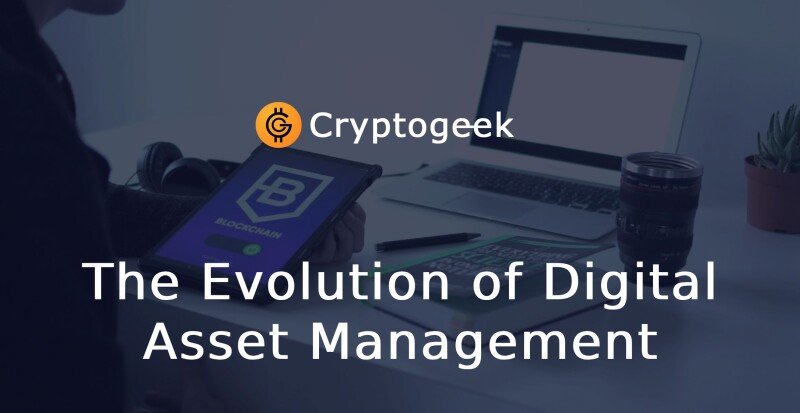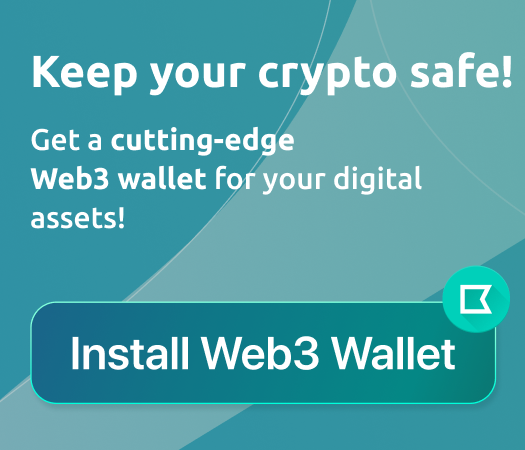The Evolution of Digital Asset Management: Security at the Forefront


Digital property, ranging from cryptocurrencies to NFTs and tokenized actual-global property, have grow to be fundamental elements of these days’s monetary ecosystem. As more people and businesses include virtual assets, the significance of steady control has surged. The growing reliance on virtual currencies and assets highlights the want for stronger security measures, specifically with the rise of cyber threats. This article explores the evolution of virtual asset control and the growing emphasis on Crypto Wallet Security, which plays a critical role in safeguarding those valuable property.
The Evolution of Digital Asset Management
Digital asset control (DAM) refers to the systems, technologies, and strategies used to arrange, keep, retrieve, and shield digital property. Over the years, DAM has evolved dramatically in reaction to the exponential growth of digital currencies and blockchain generation. What started out as simple mechanisms to keep cryptocurrency keys has now accelerated into more complex solutions designed to stabilize an extensive variety of digital properties.
The Rise of Decentralized Finance and NFTs

As decentralized finance (DeFi) and NFTs gained reputation, the need for extra sophisticated digital asset control answers became apparent. Users have been now not simply storing cryptocurrencies—they have been dealing with complete portfolios of digital belongings across a couple of systems and ecosystems. With the upward push of DeFi protocols, staking, lending, and token swaps, digital asset management required greater integrated solutions that no longer only offered garage but also facilitated secure transactions and portfolio management.
The Role of Institutional Investors
As institutional investors commenced to enter the digital asset area, the stakes grew even higher. Corporations, hedge finances, and monetary establishments needed employer-degree answers that furnished security, scalability, and regulatory compliance. This marked a turning factor within the evolution of digital asset management, as the focal point shifted from just securing property to handling them with greater transparency and oversight.
Crypto Wallet Security
As the virtual asset atmosphere has grown, so too have the dangers. With billions of greenbacks in property now held digitally, crypto wallets security has come to be paramount. Ensuring that virtual wallets are steady is a crucial thing of handling digital property and protective them from robbery, hacks, and unauthorized access.
Key Components of Crypto Wallet Security:
- Private Key Protection: A non-public secret is the maximum touchy part of a crypto wallets, and its protection is vital. Modern wallets use superior encryption techniques to maintain non-public keys safely. Hardware wallets, particularly, have won popularity as they shop keys offline, lowering exposure to online threats.
- Multi-Factor Authentication (MFA): MFA provides an additional layer of security, requiring users to verify their identification through multiple strategies. This can consist of passwords, biometric scans, and one-time verification codes.
- Cold Storage: For massive amounts of assets, bloodless garage—storing crypto offline—is one of the maximum steady alternatives. Cold wallets are immune to online hacks and are often used by establishments and long-time period buyers.
- Regular Updates and Patches: Keeping wallet software updated is crucial for averting security vulnerabilities. Many cyberattacks target outdated software programs that lack the trendy safety patches.
Advancements in Digital Asset Security

As threats evolve, so do the gear and technology aimed at safeguarding digital assets. Several advancements have fashioned the modern landscape of digital asset safety:
1. Multi-Signature Wallets
To authorize a transaction, multi-signature wallets require many secret keys. This feature is extraordinarily useful for organizations or businesses wherein more than one event needs to approve asset transfers. By requiring multiple signatures, multisig wallets add an additional layer of safety, making unauthorized transactions extra tough.
2. Custodial vs. Non-Custodial Wallets
The debate among custodial and non-custodial wallets remains a focal point in crypto wallet safety. Custodial wallets, regularly provided through exchanges, deliver 1/3-party companies manipulate over non-public keys, which can be handy but introduces dangers of centralized hacking assaults. Non-custodial wallets, however, give customers full control in their property, reducing the threat of dropping funds due to an exchange hack, however growing the responsibility for safeguarding the private keys.
Tip: For users prioritizing security, non-custodial wallets or hardware wallets are often the desired option to preserve management over private keys.
3. Enhanced Encryption Techniques
With developing protection threats, virtual asset control systems have included more superior encryption strategies to protect non-public keys and sensitive statistics. Encryption ensures that information remains steady at some stage in transmission and storage, and new cryptographic protocols, inclusive of threshold cryptography, are further enhancing security.
4. Regulatory Compliance and Audits
The rise of virtual assets has caught the attention of regulators worldwide. In reaction, many organizations supplying digital asset management services have all started to put into effect more potent safety frameworks to meet regulatory necessities. Regular audits, Know Your Customer (KYC) tactics, and Anti-Money Laundering (AML) protocols assist ensure that belongings are controlled securely even as adhering to legal standards. The evolution of virtual asset control has placed protection at the forefront of the conversation. As the digital financial system expands and greater individuals and institutions interact with cryptocurrencies and different digital belongings, Crypto Wallet Security becomes an increasing number of important. Through superior encryption, multi-signature wallets, and innovations like decentralized identity answers, the future of virtual asset management is poised to grow to be even more secure. To stay in advance, it’s essential for users and institutions alike to prioritize security with the aid of adopting high-quality practices, along with the usage of non-custodial wallets, imposing multi-element authentication, and staying knowledgeable on the modern day advancements in wallet technology. By doing so, they could guard their property and continue to thrive within the evolving international of virtual finance.

शीर्ष ट्यूटोरियल
-
Что такое хард-форк?Jul 27, 2020
-
Стейкинг на Ethereum 2.0 и его основные особенностиAug 01, 2020
-
Инновации на основе блокчейна в сфере энергетикиAug 03, 2020






CONTACT INFORMATION]📞 +1(737)368-8915(whatsapp),EMAIL[coinsrecoveryworldwide at gmail dot com]
©️2025 COINSRECOVERYWORLDWIDE
101 N BRAND BLVD.
11TH FLOOR GLENDALE CA 91203.
#investing #financialfreedom #crypto #bitcointrading #investmentstrategy #altcoins #bitcoinnews #investor #bitcoinprice #bitcoinmining #bitcoinexchange #bitcoinwallet #bitcoincommunity #bitcoinmarket #bitcointrader #bitcoinbusiness #bitcoinexpert#BITCOINSRECOVERY #STOLENBITCOINS #FOREX #USDT